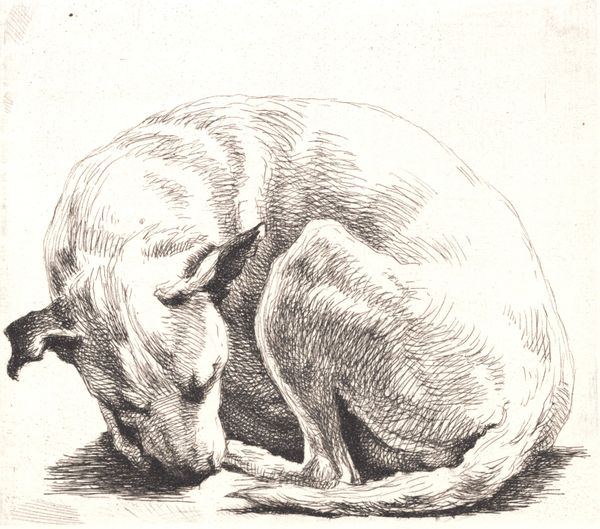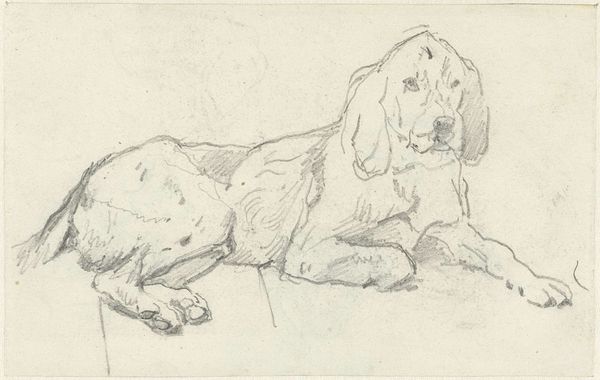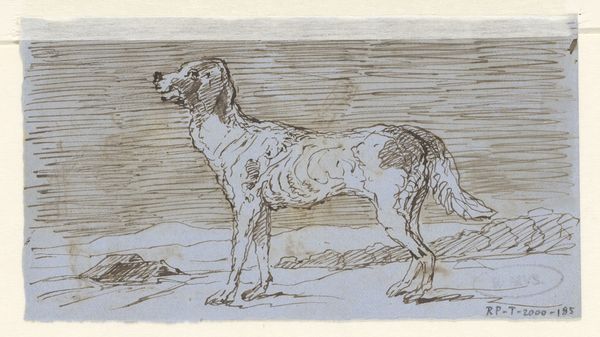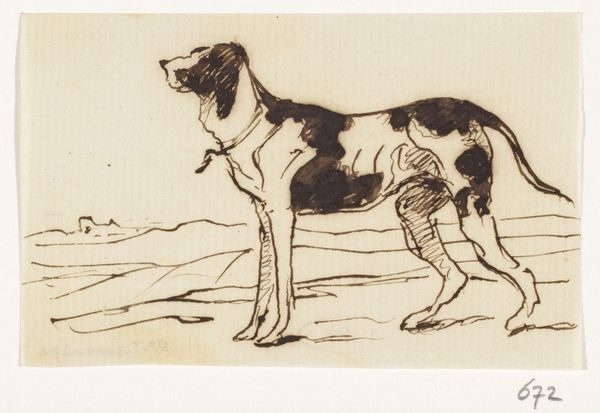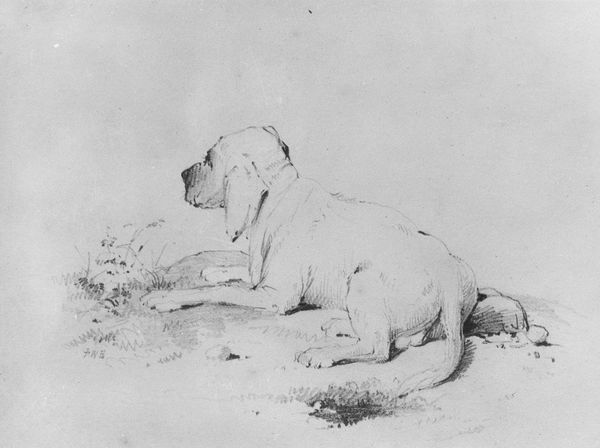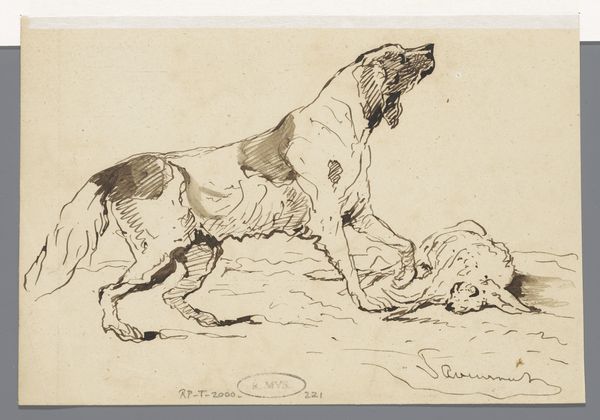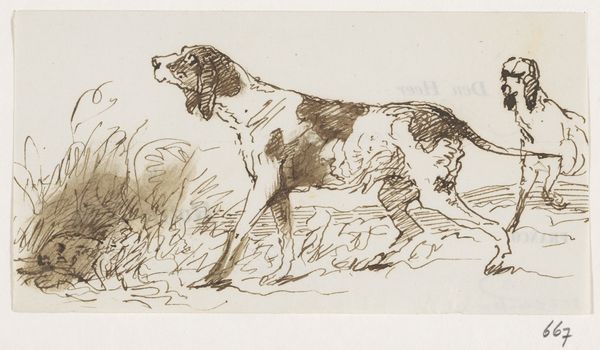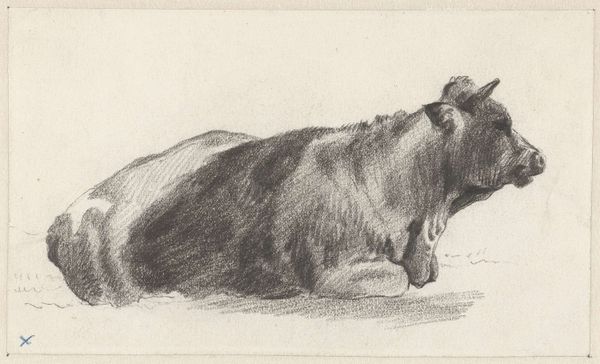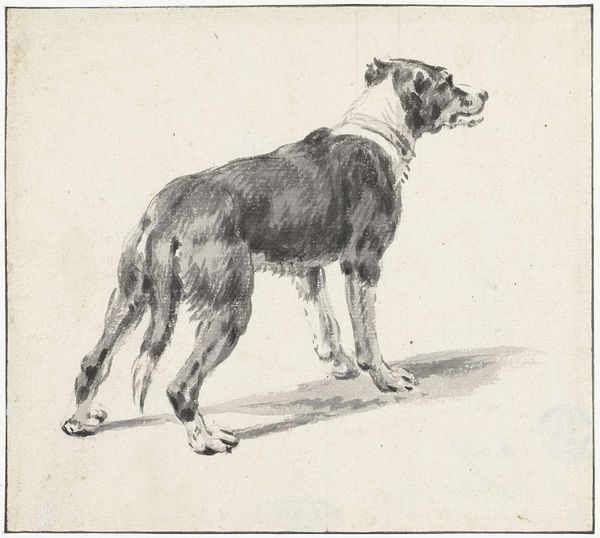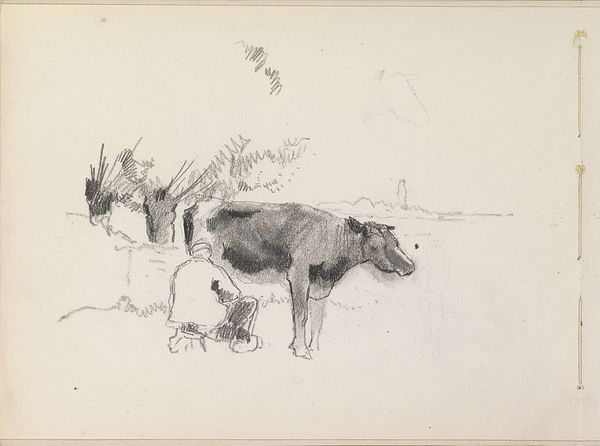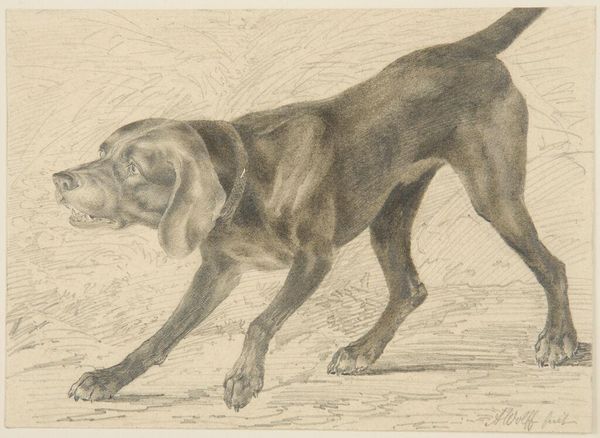
Copyright: Public domain
Curator: Let's delve into this arresting piece, simply titled "Dog." Created by Vincent van Gogh in 1862, it is a pencil drawing showcasing an animal in motion. Editor: My first impression is its raw energy. The scratchy pencil strokes really convey a sense of urgency, of something about to happen. It feels almost frantic, like the dog is lunging. Curator: Absolutely. If we situate this drawing within the context of 19th-century representations of animals, we see it deviates from the idealised portrayals popular at the time. Van Gogh isn't romanticising the dog; there’s an honesty, a grit to its depiction that speaks volumes about his social commentary. The material conditions likely placed the dog outside any sort of pampered domestic life. Editor: And the visible pencil strokes highlight the artist’s process. You can almost feel him grappling with capturing the animal's form and energy on paper, a labor to create such movement. Notice too how the relative absence of background keeps our focus locked on the canine subject. Curator: The very act of choosing to depict an animal, seemingly unburdened by human society, offers a lens into contemporary ideas surrounding freedom and the natural world, and the animal as "other." Considering feminist and postcolonial theories, what can be read into these depictions of the Other? Editor: Perhaps we can interpret it as exploring labor and instinct as it relates to its status among people. This drawing really emphasizes its muscle and potential for exertion. I imagine this dog had work to do, likely not a life of leisure. Curator: Furthermore, consider the date, 1862, during a period of great social and industrial change. There were changes in the ways artists began looking to outside inspiration—often away from socialite circles and towards peasant life, landscape, the gritty aspects of industry, and of course, toward animals that, for better or worse, embodied these very social and cultural shifts. Editor: It's a powerful image in its simplicity. It's fascinating how the artist achieved such dynamism with so few lines and stark use of monochrome. You’re left with that potent sense of restless vitality. Curator: This drawing urges us to re-evaluate not just the artistry, but how social power, class, and identity interplay with visual representation. Editor: For me, I leave with a heightened sense of how humble materials and techniques are still a strong tool for creative expressiveness.
Comments
Join the conversation
Join millions of artists and users on Artera today and experience the ultimate creative platform.

